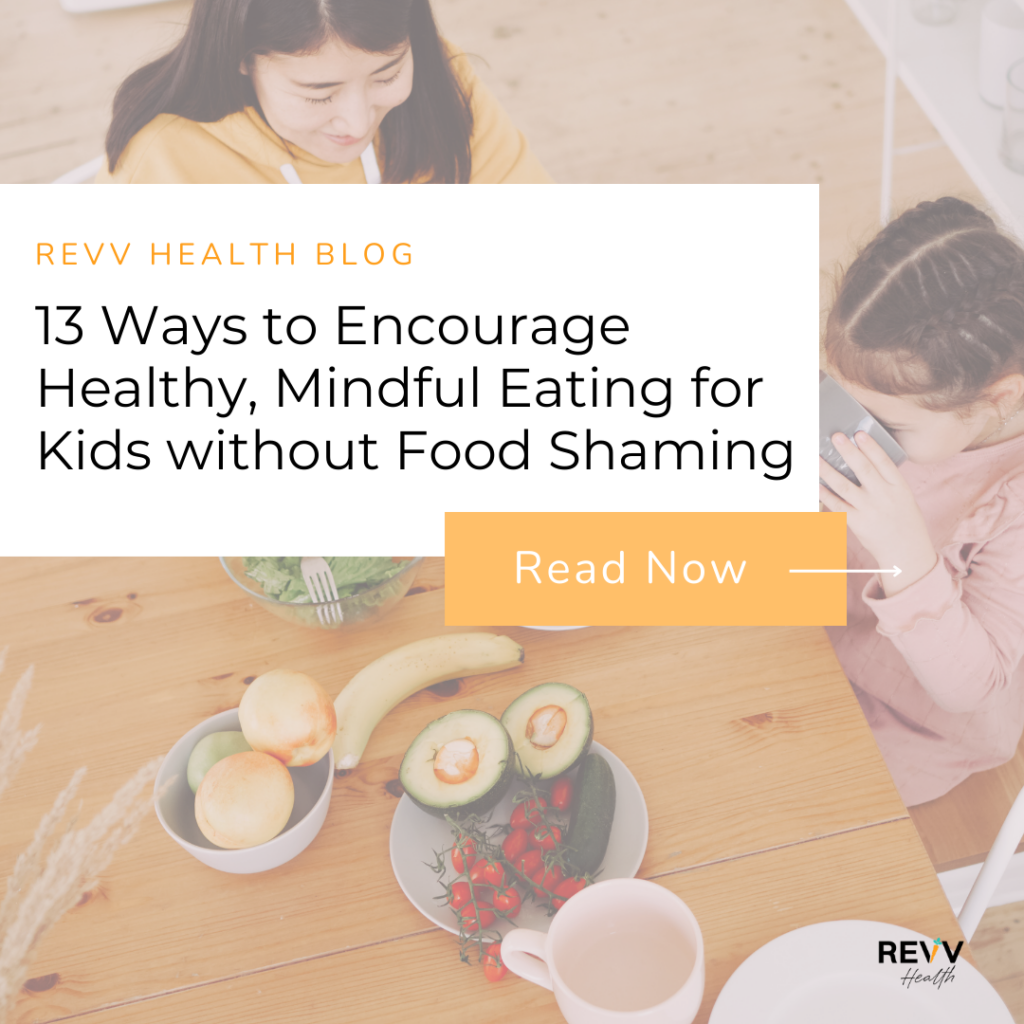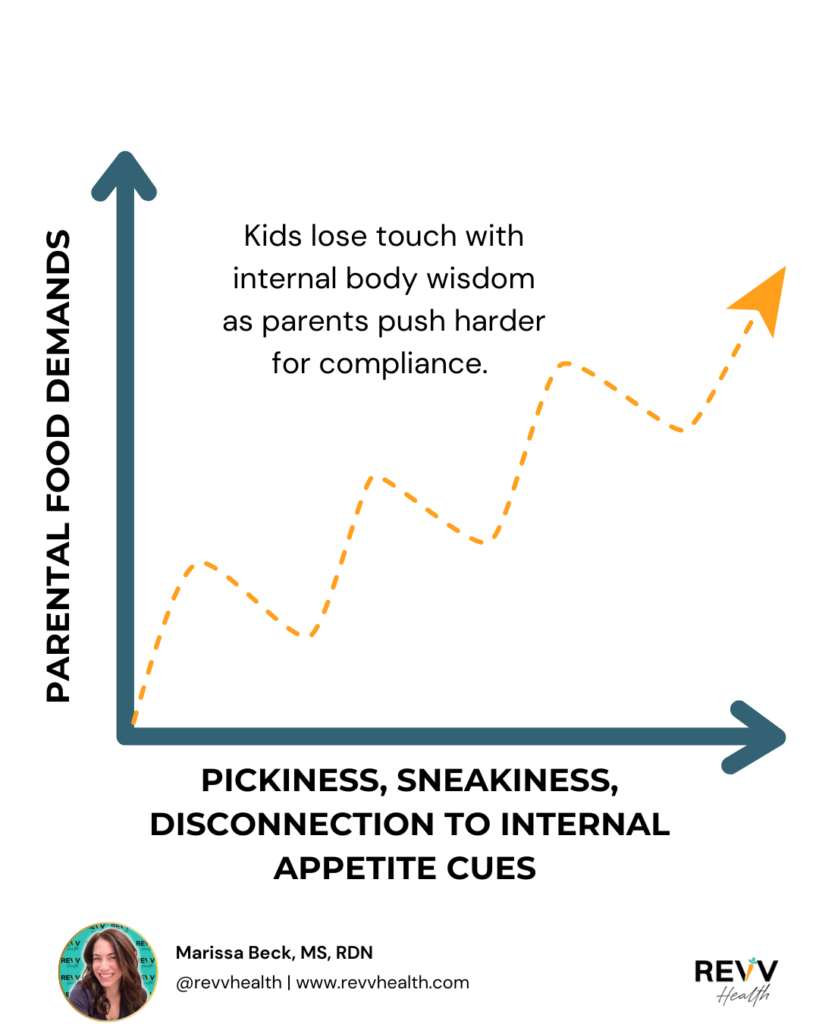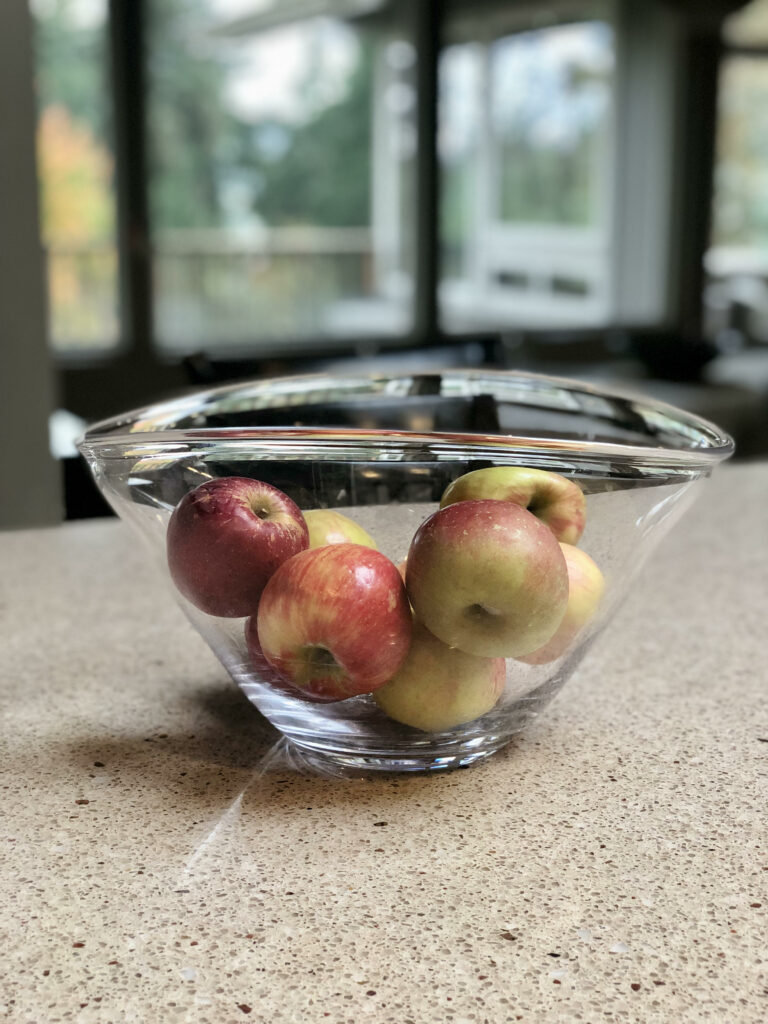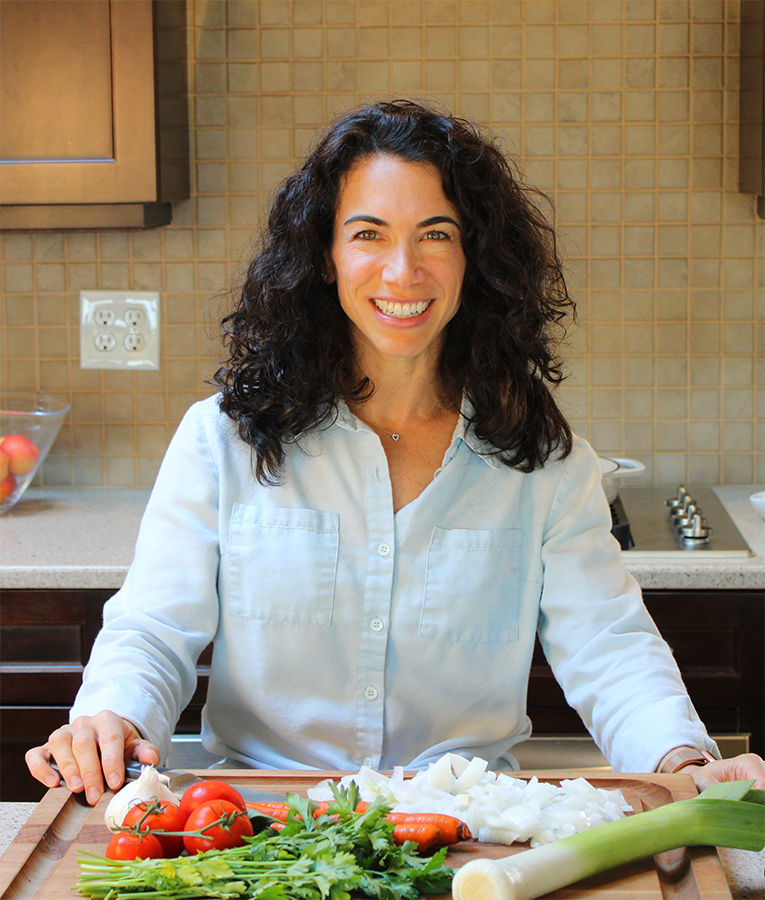Listen to this article:
You’re the type of parent who might already be interested in raising an intuitive eater, but you can’t help but wish deep down that your kids would eat just a little better.
You’ve been told not to say anything about health and nutrition to them.
But on the other hand, your instincts scream that silence isn’t the answer when your kid’s plate is missing–dun dun dun–a veggie (again!)
Welcome! I’m Marissa, a Registered Dietitian Nutritionist (RDN) and mom of two, and I’m here to help you navigate this tricky terrain of feeding your family.
My mission? To empower parents like you to find that sweet spot – not just in the foods you serve, but also in the language you use to support your kids’ growth emotionally and physically.
I often hear from parents, both clients and friends, that they’re confused about how to ensure their kids eat well while also developing a healthy relationship with food.
The questions I hear are endless:
- Should we stay completely silent when our kids aren’t eating well?
- When is it appropriate to speak up?
- Is there such a thing as mindful eating for kids?
- How do we ensure our kids are getting the nutrients they need?
- What about treats? How much is too much?
- What’s a well-intentioned parent supposed to do in this maze of conflicting advice?
Take a deep breath. By the end of this article, you’ll have clear answers to all these burning questions.
Plus, I’m sharing a game-changing tool: a one-page guide on “What-to-Say-Instead” to help you effortlessly shift from food shaming to positive food talk.
So, let’s get off that tightrope and help you get clear, actionable guidance!
The undeniable importance of nutrition
You might be thinking,
“Great, another article that glosses over the real importance of kids’ nutrition.”
But let me assure you, that’s not the case here.
Nutrition is absolutely vital for our children, and I am not about to downplay this.
What our kids eat impacts everything from their physical health to their mood and behavior.
If your child has severe pickiness, strong food aversions, or you believe they may be missing essential nutrients, I recommend consulting with a dietitian and your pediatrician to address potential issues like failure to thrive (FTT) or avoidant/restrictive food intake disorder (ARFID).
But if that isn’t your issue, then it’s possible that fear-mongering, false extremes on social media, and the desire for “perfect eating” has created unnecessary anxiety around food.
What we need is an approach that acknowledges the importance of nutrition without falling into the trap of obsession or restriction.
What we need is to find a way to help you nourish your child’s body while also nurturing their relationship with food.
This is tough, but very doable.
And it starts with recognizing what your job is as a parent:
- To provide a variety of foods to help kids grow.
- To create the menu, and structure of eating.
- To integrate loving boundaries so that your kids can tap into their cues and feel comfortable with food.
- So that, your kids can determine how much and whether or not to eat.
You can learn more about your primary roles and responsibilities in the following article, which explores the Ellyn Satter Division of Responsibility and delves deeper into these “jobs.”
How do we strike this balance?
That is the tricky part. So let’s talk about it.
What is a healthy relationship with food?
First, let’s start with some basics. A healthy relationship with food comes down to two main pieces:
1. Body trust
This is the ability to listen to your body’s cues (including hunger and fullness cues, but also emotional cues) to decide how much to eat based on your own internal experience (or to skip that food entirely).
2. Eat without guilt
Children are naturally born without feelings of guilt or shame around food—these emotions are learned over time, often passed down from parents and caregivers.
When a child begins to associate eating with guilt, it’s often the result of some “food shaming” that they might have experienced at some point in their lives.
Often, food shaming is rooted in societal expectations, diet culture, or personal biases.
The impact of food shaming can be profound, leading to a strained relationship with food and fostering feelings of guilt, anxiety, or embarrassment. Over time, these feelings can contribute to disordered eating behaviors.
This article will help you recognize these influences so that you can work toward a guilt-free approach to eating, and help both you and your child develop a healthy relationship with food.
What is food shaming?
Food shaming is the act of criticizing or judging someone for their food choices, eating habits, or body size.
This can show up in obvious ways, like direct comments, or in more subtle forms, like disapproving looks or loaded questions.
Some examples might include:
Commenting on food choices
Saying something like, “Are you really going to eat that?” when someone chooses a dessert or a high-calorie meal.
Labeling foods as either “good” or “bad”
Telling someone, “You shouldn’t eat that; it’s bad for you,” implying that their food choice is morally wrong.
Making assumptions based on food
Assuming someone is unhealthy because they’re eating fast food, processed foods or snacks.
Judging portion sizes
Commenting on how much someone is eating with remarks like, “Wow, that’s a lot of food. Do you really need that much?”
Guilt-tripping over treats
Saying or thinking, “You’ll regret eating that later,” or, “I thought you were trying to eat healthier,” when someone chooses to indulge in a treat.
Comparing food choices
Making statements like, “I’m just having a salad because I’m trying to be good,” implying that someone else’s food choice of a more substantial meal is “bad.”
Using food as a moral benchmark
Praising someone for choosing a “healthy option” with phrases like, “I’m so proud of you for eating something healthy,” suggesting that their usual choices are inferior.
Bringing up diets in social settings
Talking about your own diet or weight loss efforts in a way that makes others feel guilty or judged for their own food choices.
Parents might not recognize when they are doing this because the pressure they feel to control their child’s food intake and body weight might overpower everything else. See my article about this very concept called, What to Say if My Child Says “I’m Fat” – Helpful Scripts From an RD.
Unknowingly, this can start to chip away at your child’s ability to develop a healthy relationship with food (and with you).
Your child’s growth is beyond your control
Let me tell you about Gretchen (name changed for privacy), whose story might resonate with many parents.
Gretchen’s parents were worried about their daughter’s weight gain, especially after noticing a significant increase during the pandemic.
In response, they decided to “take control of their daughter’s food intake,” stocking the house with only “healthy” options and banning desserts.
But this approach, driven by fear, started backfiring.
Instead of developing a healthy relationship with food, Gretchen became anxious, and her weight continued to climb. She certainly was not enjoying eating with the family and instead, became overly obsessed with treats, sneaking food whenever she could.
As we worked together, Gretchen’s parents realized that micromanaging food was creating more harm than good. It’s not always easy to recognize when a change is needed, but as parents, we’re not perfect—we’re allowed to grow, make mistakes, and pivot when necessary.
By shifting their mindset and adopting new routines, Gretchen and her family learned to trust the process, where everyone started to build a mindful, guilt-free relationship with food.
Just like tending a garden, while we can nurture, we can’t control every aspect of a child’s growth.
If Gretchen’s story resonates with you, remember that it’s never too late to foster body trust and help both you and your child eat without guilt.
It’s similar to teaching kids about money—they need space to make mistakes and learn.
The same goes for food. By giving them the freedom to listen to their bodies, we nurture a healthier relationship with both food and their growing selves.
Practical strategies to strike that sweet spot of having it all
As parents, we’re all doing our best.
We want our kids to eat nutritiously, but we also want them to develop a healthy relationship with food.
It’s not an either-or situation – I promise you we can have both, and that’s exactly what we’re aiming for with these practical strategies.
But here’s the twist: achieving these goals often starts with a counterintuitive idea: We need to take the spotlight off “healthy” foods.
(Yes, you read that right.)
When we put too much emphasis on labeling foods as “healthy” or “unhealthy,” we inadvertently give certain foods more power than they deserve.
This can lead to an undesirable fixation on “good” and “bad” foods, potentially setting the stage for restrictive eating patterns, food anxieties, or worse, disordered eating patterns and eating disorders (ugh).
Instead, our goal here is to create an environment where all foods can be eaten without moral judgment.
This doesn’t mean we throw nutrition out the window. Far from it. It means we’re smart about how we present and talk about food with our kids.
So, how do we do this? How can we nurture healthy eating habits while fostering a positive relationship with food?
Here are 12 practical tips:
1) Lead by example:
Model healthy eating behaviors and attitudes. Enjoy a variety of foods without labeling them as “good” or “bad.” This is considered an “all foods fit” approach.
Pro tip: you might need to get curious about your own relationship with food to discover if it is contributing to what’s going on with your kiddos. It’s a hard pill to swallow, but know that you can get the support you need, and it is never too late!
2) Offer a variety of foods:
Regularly introduce new foods alongside familiar ones. This encourages exploration and broadens your children’s palate beyond the basics. This is part of how we ensure kids are getting the nutrients they need.
Pro tip: I understand parents worry about whether their kids are getting enough nutrients or eating too much of one thing. But you can’t control what they eat and still expect your kids to have a healthy relationship with food. Instead of fixating on their appetite (which is out of your control), focus on what you offer (which is within your control).
For example, consider providing a “hangry plate” of fruits and veggies before dinner—no pressure to eat, just an option if they’re hungry. If you’d like to join my Hangry Plate Challenge, it’s a 5-day free event that you can start today.
3) Involve kids in meal planning & prep:
Let them choose food at the grocery store or help with age-appropriate cooking tasks. You’d be surprised how much more likely they are to try that red pepper when they’ve sliced it themselves.
Pro tip: this works even for kids who are apathetic about being in the kitchen. Ask them to pick a job, any job! Check out my favorite things page for my family-friendly kitchen recommendations for some starter tools. (Scroll down to find the kid-specific items.)
4) Create a positive mealtime environment:
Keep conversations pleasant and avoid pressuring kids to eat. Follow the Ellyn Satter Division of Responsibility if you need more help with this.
Pro tip: try table topics*! It gets your family in the mood to start having fun at the table. Then, you can create your own games. My family loves trivia, and the kids are now asking us questions, too.
*note: this is an affiliate link, and I ONLY recommend items I use and value.
5) Respect hunger and fullness cues:
Allow children to decide how much to eat. This helps them develop intuitive eating skills. Here’s a more in-depth article about how to raise an intuitive eater if this topic interests you.
Pro tip: every time you THINK your kiddos should eat more or less, bite your tongue. Whatever you’re about to say is not likely going to help.
6) Avoid using food as a reward or punishment:
This can create unhealthy associations with certain foods. The goal is to offer the foods you intended to offer regardless of how many green beans your kiddos ate. They still get the ice cream, and it’s not contingent upon “healthy eating.”
Pro tip: find a different non-food related way to discipline or acknowledge efforts. You’d be surprised about how creative you can get.
7) Make nutritious foods easily accessible:
Keep cut vegetables, fruits, and other healthy snacks within reach. If they’re not around, and I’m referring to being around daily, then we can’t expect kiddos to get in the habit of eating them. But follow the division of responsibility to make sure it’s offered in a structured way versus a graze fest.
Pro tip: I like to keep “anytime apples” available in my kitchen in our large, clear apple bowl.
8) Limit distractions during meals:
Turn off screens and focus on enjoying food and family time. Eating with others and enjoying the actual experience relaxes the nervous system. This parasympathetic state allows for a more pleasant internal experience to try new foods, feel relaxed at the table, and have fun.
Pro tip: try somatic nervous system work before eating, such as blowing out pretend birthday candles or stretching your body.
9) Be patient with picky eaters:
I often tell MYSELF with my own picky eater, “Rome wasn’t built in a day.” Offer new foods multiple times without pressure. It can take many exposures before a child accepts a new food (source).
Pro tip: steal this mindset shift—have faith. If you have faith in them, they are much more likely to get there. Try not to label them “picky”; instead, try “foodie in training.”
10) Educate about nutrition without moralizing:
There is no need to say things like, “That is so much sugar!!” It doesn’t teach kids anything but to fear food and to covet restricted items.
Pro tip: focus on how foods help our bodies grow and function — you can say things instead like: “I’m glad you’re enjoying the snacks. Let’s pause and check in with your tummy to see how it’s feeling.” This is how we connect with kids and offer a mindful eating boundary without shaming.
11) Allow treats:
Restrict treats, and they become more desirable. Include treats occasionally without making a big deal about it, and they won’t be as obsessed.
For reference, there isn’t a “right” amount of “how often,” but I’ve noticed that when parents only let their kids eat treats on special occasions, this is where problems tend to occur.
Pro tip: some ideas:
- Get a bag of gummies on a random Monday.
- Stop off at the ice cream store for a cone in the summer, just because.
- Serve some warm hot cocoa with marshmallows in the winter and make memories.
- Skip dessert some nights or days because it’s not on the menu. No other reasons necessary.
- Eat treats together. Without adding unhelpful, food shaming comments like, “I shouldn’t be … or … this will cause me to gain weight.”
- If you are not going to eat the treat, a simple “no thanks” will do. You do not need to add, “because I need to lose weight.”
- If kids ask for a treat, and it’s not time to eat it, share when it could be a better time (make sure it’s within close proximity to when they asked and not a month out).
12) Encourage mindful eating for kids:
Teach kids to pay attention to how food tastes, the texture, and how it makes them feel. Note: mindful eating for kids or adults doesn’t need to be a prescribed, slow, savor-every-bite experience.
Pro tip: my family created the “listen to your body club,” which my kids proudly represent even when away from us for the day at school. You can join, too! This is in rebellion against the “clean your plate club.”
13) Garden together:
When kids learn where their food comes from, it can be a real game changer. Even if you don’t have a backyard, a simple windowsill herb garden can make a big impact.
Pro tip: let your kids choose which herbs to grow. Involving them in the process not only makes it fun but also encourages them to try the foods they’ve helped nurture.
Overwhelmed! How do I begin?
As parents, we don’t have all of the answers. But you are looking for people who can support your goals. I can do that.
Here are some ways I can help. If you were my client, I would explore:
- Picky Eating: how do you handle picky eating in your family?
- Family Dynamics: what are the feeding dynamics in your household, i.e., how is it going when you are eating, whether together or separately?
- Cultural Traditions: if you want or need to, are you incorporating any cultural traditions into your meals?
- Goals and Concerns: what are your overall goals for feeding your kids, and where do your biggest concerns lie?
- Activities and Independence: are your kids involved in sports or often eating out on their own?
This is how I start to help you create a “foodscape” that paints a picture of your current everyday life so that we can figure out how to best support your family’s nutritional needs and goals.
You can easily book a casual 20-minute FREE parent nutrition breakthrough session; I accept nationwide inquiries for parent nutrition coaching.
The main takeaway
Even though it might feel like walking on egg shells, you can finding the right balance between speaking up and staying silent without “messing up your kids for life.”
You can do this by setting clear boundaries without food shaming.
Doing so often requires parents and caregivers to reflect on their own relationship with food and nutrition, ensuring they don’t unintentionally pass down unhelpful habits to their children.
To support you in this journey, I’ve created a special download called, “What-to-Say-Instead” to help you effortlessly shift from food shaming to positive food talk in your own home.
Remember, you are the expert on your child. You understand their quirks, preferences, and needs better than anyone else. Trust your instincts, but don’t hesitate to seek guidance when you need it.








0 Comments